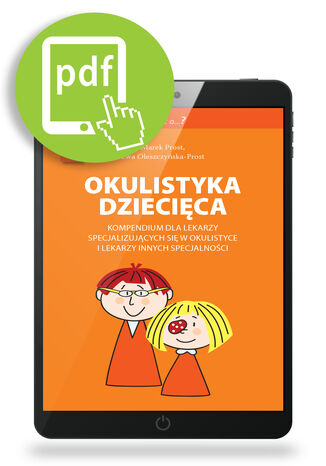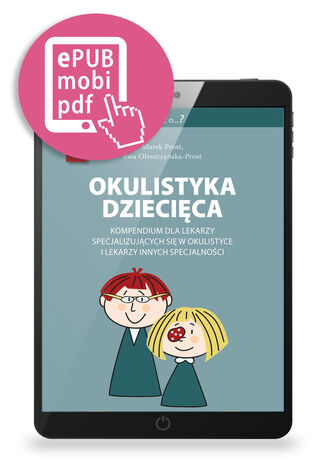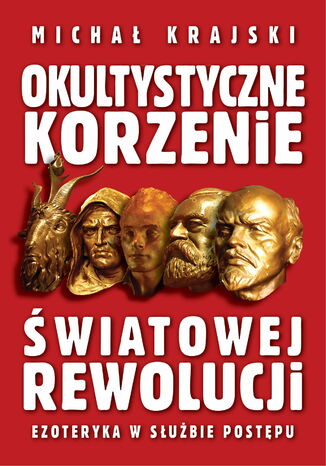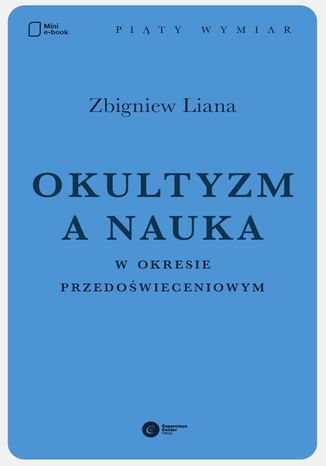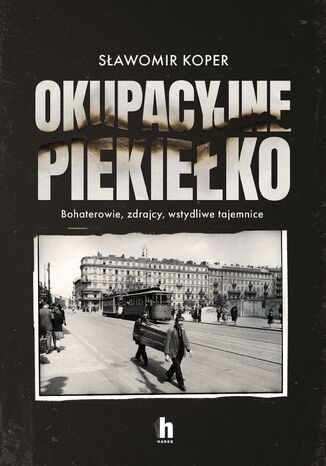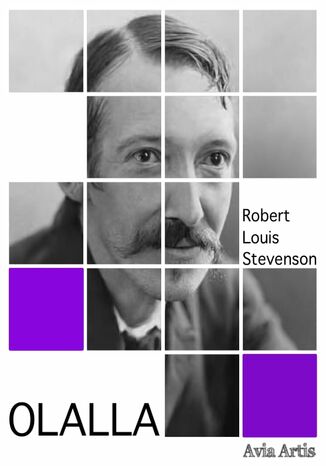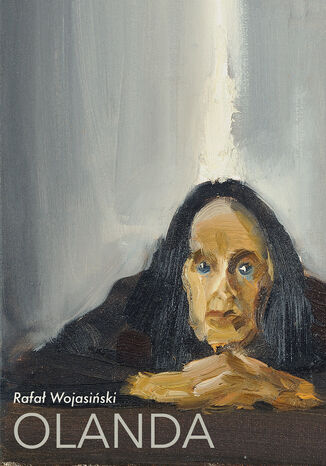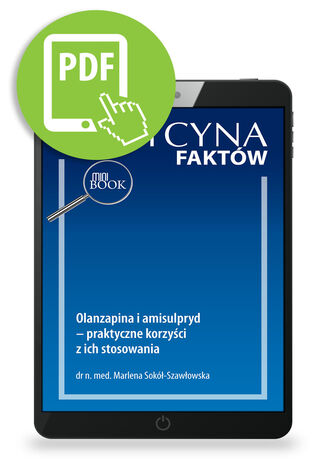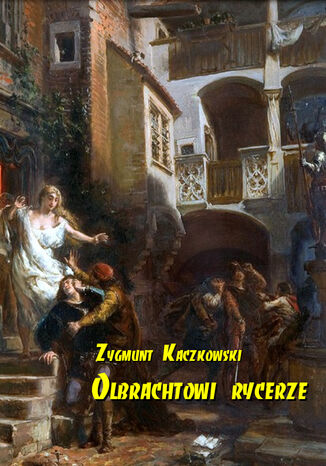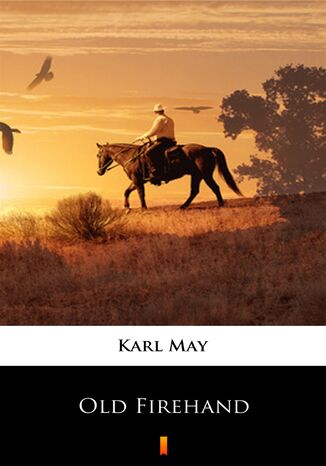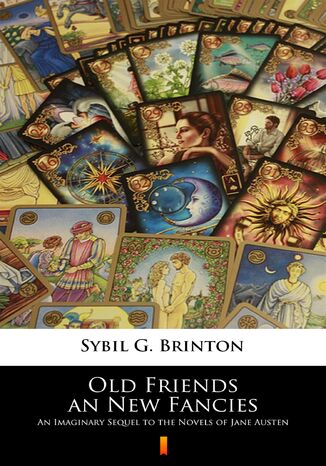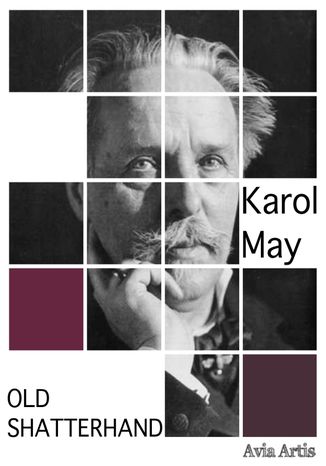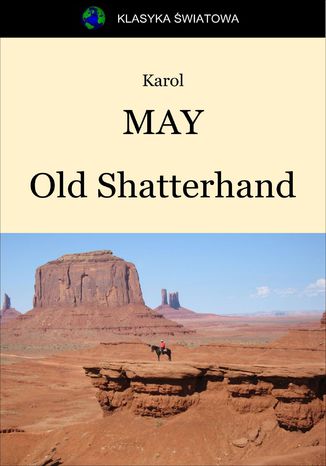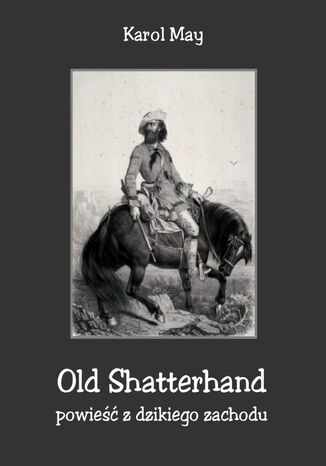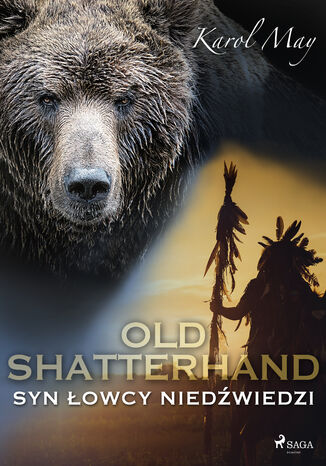Kategorie
Ebooki
-
Biznes i ekonomia
- Bitcoin
- Bizneswoman
- Coaching
- Controlling
- E-biznes
- Ekonomia
- Finanse
- Giełda i inwestycje
- Kompetencje osobiste
- Komputer w biurze
- Komunikacja i negocjacje
- Mała firma
- Marketing
- Motywacja
- Multimedialne szkolenia
- Nieruchomości
- Perswazja i NLP
- Podatki
- Polityka społeczna
- Poradniki
- Prezentacje
- Przywództwo
- Public Relation
- Raporty, analizy
- Sekret
- Social Media
- Sprzedaż
- Start-up
- Twoja kariera
- Zarządzanie
- Zarządzanie projektami
- Zasoby ludzkie (HR)
-
Dla dzieci
-
Dla młodzieży
-
Edukacja
-
Encyklopedie, słowniki
-
E-prasa
- Architektura i wnętrza
- BHP
- Biznes i Ekonomia
- Dom i ogród
- E-Biznes
- Ekonomia i finanse
- Ezoteryka
- Finanse
- Finanse osobiste
- Firma
- Fotografia
- Informatyka
- Kadry i płace
- Kobieca
- Komputery, Excel
- Księgowość
- Kultura i literatura
- Naukowe i akademickie
- Ochrona środowiska
- Opiniotwórcze
- Oświata
- Podatki
- Podróże
- Psychologia
- Religia
- Rolnictwo
- Rynek książki i prasy
- Transport i Spedycja
- Zdrowie i uroda
-
Historia
-
Informatyka
- Aplikacje biurowe
- Bazy danych
- Bioinformatyka
- Biznes IT
- CAD/CAM
- Digital Lifestyle
- DTP
- Elektronika
- Fotografia cyfrowa
- Grafika komputerowa
- Gry
- Hacking
- Hardware
- IT w ekonomii
- Pakiety naukowe
- Podręczniki szkolne
- Podstawy komputera
- Programowanie
- Programowanie mobilne
- Serwery internetowe
- Sieci komputerowe
- Start-up
- Systemy operacyjne
- Sztuczna inteligencja
- Technologia dla dzieci
- Webmasterstwo
-
Inne
-
Języki obce
-
Kultura i sztuka
-
Lektury szkolne
-
Literatura
- Antologie
- Ballada
- Biografie i autobiografie
- Dla dorosłych
- Dramat
- Dzienniki, pamiętniki, listy
- Epos, epopeja
- Esej
- Fantastyka i science-fiction
- Felietony
- Fikcja
- Humor, satyra
- Inne
- Klasyczna
- Kryminał
- Literatura faktu
- Literatura piękna
- Mity i legendy
- Nobliści
- Nowele
- Obyczajowa
- Okultyzm i magia
- Opowiadania
- Pamiętniki
- Podróże
- Poemat
- Poezja
- Polityka
- Popularnonaukowa
- Powieść
- Powieść historyczna
- Proza
- Przygodowa
- Publicystyka
- Reportaż
- Romans i literatura obyczajowa
- Sensacja
- Thriller, Horror
- Wywiady i wspomnienia
-
Nauki przyrodnicze
-
Nauki społeczne
-
Podręczniki szkolne
-
Popularnonaukowe i akademickie
- Archeologia
- Bibliotekoznawstwo
- Filmoznawstwo
- Filologia
- Filologia polska
- Filozofia
- Finanse i bankowość
- Geografia
- Gospodarka
- Handel. Gospodarka światowa
- Historia i archeologia
- Historia sztuki i architektury
- Kulturoznawstwo
- Lingwistyka
- Literaturoznawstwo
- Logistyka
- Matematyka
- Medycyna
- Nauki humanistyczne
- Pedagogika
- Pomoce naukowe
- Popularnonaukowa
- Pozostałe
- Psychologia
- Socjologia
- Teatrologia
- Teologia
- Teorie i nauki ekonomiczne
- Transport i spedycja
- Wychowanie fizyczne
- Zarządzanie i marketing
-
Poradniki
-
Poradniki do gier
-
Poradniki zawodowe i specjalistyczne
-
Prawo
- BHP
- Historia
- Kodeks drogowy. Prawo jazdy
- Nauki prawne
- Ochrona zdrowia
- Ogólne, kompendium wiedzy
- Podręczniki akademickie
- Pozostałe
- Prawo budowlane i lokalowe
- Prawo cywilne
- Prawo finansowe
- Prawo gospodarcze
- Prawo gospodarcze i handlowe
- Prawo karne
- Prawo karne. Przestępstwa karne. Kryminologia
- Prawo międzynarodowe
- Prawo międzynarodowe i zagraniczne
- Prawo ochrony zdrowia
- Prawo oświatowe
- Prawo podatkowe
- Prawo pracy i ubezpieczeń społecznych
- Prawo publiczne, konstytucyjne i administracyjne
- Prawo rodzinne i opiekuńcze
- Prawo rolne
- Prawo socjalne, prawo pracy
- Prawo Unii Europejskiej
- Przemysł
- Rolne i ochrona środowiska
- Słowniki i encyklopedie
- Zamówienia publiczne
- Zarządzanie
-
Przewodniki i podróże
- Afryka
- Albumy
- Ameryka Południowa
- Ameryka Środkowa i Północna
- Australia, Nowa Zelandia, Oceania
- Austria
- Azja
- Bałkany
- Bliski Wschód
- Bułgaria
- Chiny
- Chorwacja
- Czechy
- Dania
- Egipt
- Estonia
- Europa
- Francja
- Góry
- Grecja
- Hiszpania
- Holandia
- Islandia
- Litwa
- Łotwa
- Mapy, Plany miast, Atlasy
- Miniprzewodniki
- Niemcy
- Norwegia
- Podróże aktywne
- Polska
- Portugalia
- Pozostałe
- Przewodniki po hotelach i restauracjach
- Rosja
- Rumunia
- Słowacja
- Słowenia
- Szwajcaria
- Szwecja
- Świat
- Turcja
- Ukraina
- Węgry
- Wielka Brytania
- Włochy
-
Psychologia
- Filozofie życiowe
- Kompetencje psychospołeczne
- Komunikacja międzyludzka
- Mindfulness
- Ogólne
- Perswazja i NLP
- Psychologia akademicka
- Psychologia duszy i umysłu
- Psychologia pracy
- Relacje i związki
- Rodzicielstwo i psychologia dziecka
- Rozwiązywanie problemów
- Rozwój intelektualny
- Sekret
- Seksualność
- Uwodzenie
- Wygląd i wizerunek
- Życiowe filozofie
-
Religia
-
Sport, fitness, diety
-
Technika i mechanika
Audiobooki
-
Biznes i ekonomia
- Bitcoin
- Bizneswoman
- Coaching
- Controlling
- E-biznes
- Ekonomia
- Finanse
- Giełda i inwestycje
- Kompetencje osobiste
- Komunikacja i negocjacje
- Mała firma
- Marketing
- Motywacja
- Nieruchomości
- Perswazja i NLP
- Podatki
- Polityka społeczna
- Poradniki
- Prezentacje
- Przywództwo
- Public Relation
- Sekret
- Social Media
- Sprzedaż
- Start-up
- Twoja kariera
- Zarządzanie
- Zarządzanie projektami
- Zasoby ludzkie (HR)
-
Dla dzieci
-
Dla młodzieży
-
Edukacja
-
Encyklopedie, słowniki
-
E-prasa
-
Historia
-
Informatyka
-
Inne
-
Języki obce
-
Kultura i sztuka
-
Lektury szkolne
-
Literatura
- Antologie
- Ballada
- Biografie i autobiografie
- Dla dorosłych
- Dramat
- Dzienniki, pamiętniki, listy
- Epos, epopeja
- Esej
- Fantastyka i science-fiction
- Felietony
- Fikcja
- Humor, satyra
- Inne
- Klasyczna
- Kryminał
- Literatura faktu
- Literatura piękna
- Mity i legendy
- Nobliści
- Nowele
- Obyczajowa
- Okultyzm i magia
- Opowiadania
- Pamiętniki
- Podróże
- Poezja
- Polityka
- Popularnonaukowa
- Powieść
- Powieść historyczna
- Proza
- Przygodowa
- Publicystyka
- Reportaż
- Romans i literatura obyczajowa
- Sensacja
- Thriller, Horror
- Wywiady i wspomnienia
-
Nauki przyrodnicze
-
Nauki społeczne
-
Popularnonaukowe i akademickie
-
Poradniki
-
Poradniki zawodowe i specjalistyczne
-
Prawo
-
Przewodniki i podróże
-
Psychologia
- Filozofie życiowe
- Komunikacja międzyludzka
- Mindfulness
- Ogólne
- Perswazja i NLP
- Psychologia akademicka
- Psychologia duszy i umysłu
- Psychologia pracy
- Relacje i związki
- Rodzicielstwo i psychologia dziecka
- Rozwiązywanie problemów
- Rozwój intelektualny
- Sekret
- Seksualność
- Uwodzenie
- Wygląd i wizerunek
- Życiowe filozofie
-
Religia
-
Sport, fitness, diety
-
Technika i mechanika
Kursy video
-
Bazy danych
-
Big Data
-
Biznes, ekonomia i marketing
-
Cyberbezpieczeństwo
-
Data Science
-
DevOps
-
Dla dzieci
-
Elektronika
-
Grafika/Wideo/CAX
-
Gry
-
Microsoft Office
-
Narzędzia programistyczne
-
Programowanie
-
Rozwój osobisty
-
Sieci komputerowe
-
Systemy operacyjne
-
Testowanie oprogramowania
-
Urządzenia mobilne
-
UX/UI
-
Web development
-
Zarządzanie
Podcasty
Okudżawa. Życie, piosenki, legenda
Okudżawa Dmitrija Bykowa to pierwsza w Polsce obszerna biografia rosyjskiego śpiewającego poety (obrażał się, gdy nazywano go bardem). Chociaż od lat sześćdziesiątych piosenki Okudżawy (19241997) cieszą się w Polsce niezmiennym powodzeniem, prawie nic nie wiemy o życiu ich autora. Sam starał się mówić o nim jak najmniej. A jest to życiorys tragiczny, będący odzwierciedleniem całej epoki porewolucyjnej Rosji od lat represji stalinowskich po epokę "zastoju" Breżniewa i upadek ZSRR. Rozstrzelany ojciec, matka dwukrotnie skazana na łagier i zesłanie, wojna, szykany, cenzura, bezustanne zmaganie się z nagonką "prawdziwych partyjnych patriotów" na poezję, która tylko broniła prawa człowieka do bycia uczciwym, niezależnym i myślącym Kilkanaście piosenek, od lat znanych polskiemu słuchaczowi, nie oddaje tragizmu losów ich twórcy, rozpaczliwie broniącego swojego człowieczeństwa w nieludzkim ustroju. Tę lukę wypełnia ponad sto wierszy, po raz pierwszy prezentowanych w książce Bykowa - wielu z nich nigdy nie publikowano nawet w Rosji, zachowały się tylko w rękopisach, przechowywanych przez przyjaciół Okudżawy. Za każdym kryje się pasjonująca historia, która pozwala zagłębić się w sowiecką codzienność, poznać donosy na poetę, a także jego burzliwe życie osobiste - od łobuzerskiej młodości na podwórku moskiewskiego Arbatu po liczne romanse i działalność opozycyjną. Bułat był wielkim przyjacielem Polski. To w Polsce ukazała się jego pierwsza płyta, a Modlitwy François Villona z niezmiennym zachwytem słuchają kolejne pokolenia. Niech więc biografia poety wzbogaci naszą wiedzę o nim i o Rosji, a Czytelników umocni w przekonaniu, że trzy siostry, wierne towarzyszki twórczości Okudżawy Wiara, Nadzieja i Miłość zawsze zwyciężają. Dmitrij Bykow (ur. 1967), rosyjski poeta i prozaik, obrazoburczy satyryk, kontrowersyjny dziennikarz oraz popularny publicysta, znakomity propagator kultury i sztuki, autor programów literackich na kanale telewizyjnym Deszcz. Jego prelekcje o literaturze gromadzą tłumy słuchaczy we wszystkich miastach Rosji. Zagorzały antystalinowiec, dwukrotnie odmówił spotkania z prezydentem Putinem. Uczestniczył w wielu akcjach opozycji. Jest autorem książek z dziedziny literaturoznawstwa, m.in. dyskusyjnych biografii Borysa Pasternaka, Maksyma Gorkiego, Włodzimierza Majakowskiego i Bułata Okudżawy.
Pojawiająca się na rynku wydawniczym pozycja o charakterze monografii poświęconej w całości praktycznym aspektom budowy i czynności narządu wzroku u dzieci wypełnia istniejącą niszę w naszej rodzimej literaturze. Na podstawie dostępnej wiedzy, ale - i przede wszystkim - bardzo bogatego doświadczenia klinicznego autorów omówiono specyfikę budowy i rozwoju narządu wzroku u dzieci oraz zwrócono uwagę na praktyczne aspekty badania okulistycznego. W części klinicznej w przejrzysty, usystematyzowany sposób przedstawiono pełny zakres zmian chorobowych wieku dziecięcego i wzbogacono je imponującą dokumentacją fotograficzną. Oprócz problemów diagnostycznych autorzy prezentują najnowsze możliwości leczenia farmakologicznego oraz chirurgicznego. Szczególnej uwadze polecamy rozdział poświęcony rozpoznaniu i leczeniu zeza wieku dziecięcego. Monografia ta powinna znaleźć się w biblioteczce każdego lekarza zajmującego się problemami okulistyki, nie tylko wieku dziecięcego. Przystępny sposób omówienia poszczególnych zagadnień ułatwi także wykorzystanie jej przez lekarzy innych specjalności.
Marek Prost, Ewa Oleszczyńska-Prost
Pojawiająca się na rynku wydawniczym pozycja o charakterze monografii poświęconej w całości praktycznym aspektom budowy i czynności narządu wzroku u dzieci wypełnia istniejącą niszę w naszej rodzimej literaturze. Na podstawie dostępnej wiedzy, ale - i przede wszystkim - bardzo bogatego doświadczenia klinicznego autorów omówiono specyfikę budowy i rozwoju narządu wzroku u dzieci oraz zwrócono uwagę na praktyczne aspekty badania okulistycznego. W części klinicznej w przejrzysty, usystematyzowany sposób przedstawiono pełny zakres zmian chorobowych wieku dziecięcego i wzbogacono je imponującą dokumentacją fotograficzną. Oprócz problemów diagnostycznych autorzy prezentują najnowsze możliwości leczenia farmakologicznego oraz chirurgicznego. Szczególnej uwadze polecamy rozdział poświęcony rozpoznaniu i leczeniu zeza wieku dziecięcego. Monografia ta powinna znaleźć się w biblioteczce każdego lekarza zajmującego się problemami okulistyki, nie tylko wieku dziecięcego. Przystępny sposób omówienia poszczególnych zagadnień ułatwi także wykorzystanie jej przez lekarzy innych specjalności.
Okultystyczne korzenie światowej rewolucji. Ezoteryka w służbie postępu
Co komunizm ma wspólnego z tradycją ezoteryczną, ze starożytnymi orfikami i gnozą? Sam Karol Marks miał osobiście niewiele wspólnego z orfizmem, ale korzenie idei, które gorliwie wyznawał, sięgają zamierzchłej starożytności. Kiedy z ideologii zdrapiemy pokost propagandy, ze zdziwieniem dokopiemy się do głęboko ezoterycznej natury komunizmu. Do prawdy tak zaskakującej, że zdumiałaby wielu zagorzałych komunistów, wierzących, że wyznają ideologię wolną od wszelkich konotacji religijnych, ideologię opartą na materialistycznych założeniach naukowych, a nie na przesądach. Bo komunizm to w gruncie rzeczy zbiór kilku ezoterycznych dogmatów: - materializm (monizm) i związane z tym zakwestionowanie widzialnej rzeczywistości - przyjęcie dialektyki jako metody myślenia akceptującej absurd (sprzeczność) - odrzucenie własności prywatnej i wszelkiej hierarchii. U podstaw tej teologii stoi zaś przekonanie, że człowiek jest bogiem, najwyższym stworzeniem we wszechświecie, które ma prawo stanowić o tym, co dobre i złe. W praktyce - to ostatnie przekonanie ograniczało się dziwnym trafem do wąskiej grupy nadludzi, którzy rościli sobie prawo do decydowania o życiu i śmierci podległych sobie mas. Głosili oni, a część wierzyła, że zbudują dla bliźnich/braci/towarzyszy idealny świat. Szkoda, że ta wiara, jako głęboko utopijna, ładnie brzmiący przesąd światło ćmiący prowadzi ich zawsze do tragedii, a ich zamierzenia szlachetnych ideowców niezmiennie kończą się zbrodnią.
Okultyzm a nauka w okresie przedoświeceniowym
Astrologia, magia i alchemia nie spełniają współczesnych kryteriów racjonalności i naukowości. Uchodzą za synonim intelektualnej naiwności, zacofania i przesądu. Są nienaukowe. Równie krytycznie są oceniane przez teologię chrześcijańską jako nie do pogodzenia z wiarą chrześcijańską. Tymczasem nie zawsze tak było. Aż do czasów Oświecenia nie były sprzeczne ani z nauką, ani z religią chrześcijańską, przynajmniej w swym zasadniczym zrębie. Co więcej, nauka, teologia i okultyzm żyły wówczas w głębokiej, jakkolwiek nie zawsze łatwej, symbiozie. Celem niniejszej pracy jest analiza intelektualnej dynamiki tej symbiozy w przedoświeceniowym obrazie świata. W przekonaniu autora analizy te pozwalają unaocznić funkcjonowanie tak zwanego związania z paradygmatem względnie z obrazem świata, zarówno w nauce, jak i w religii.
Herbert wiedzie spokojne życie w jednej z podwarszawskich miejscowości, gdzie nikt nie zna jego mrocznej przeszłości. Nawet przed ukochaną kobietą skrzętnie skrywa kim jest naprawdę. Bycie skromnym krawcem z Podkowy Leśnej jest spełnieniem jego marzeń. Przeszłość jednak nie pozwala o sobie zapomnieć. Melania zostaje uprowadzona i jej życie zależy tylko od tego czy Herbert zdąży na czas dostarczyć tajemniczą przesyłkę do Warszawy. Miasta w którym jego moce nie działają, gdyż magia w stolicy jest od bardzo dawna nieobecna. Pokonanie 30 kilometrów w kilka godzin nie wydaje się być wielkim wyzwaniem. Staje się nim jednak kiedy jego tropem ruszają: magowie, przedstawiciele tajemniczego "Bractwa Miast", wyznawcy Bazyliszka, najemnicy i policja. Przeszkody piętrzą się na każdym kroku i tylko poznani przypadkowo sojusznicy oraz niespodziewanie budząca się do życia magia dają szanse na ocalenie ukochanej. Warszawa nie miała do tej pory swojego maga, a Herbert Kruk jest idealnym kandydatem! Patronat: Madbooks.pl | Bookiatryk.pl | Esensja.pl | GameExe.pl | Katedra | Polter.pl | Szortal.com
Okupacyjne piekiełko. Bohaterowie, zdrajcy, wstydliwe tajemnice
Szmalcownicy, kolaboracja z okupantami, zdrady i zabójstwa polityczne na najwyższych szczeblach polskich władz konspiracyjnych. Tym razem najpopularniejszy pisarz historyczny w Polsce dotyka tematów, które w narracji bogoojczyźnianej stanowią tabu. Kaliber opisywanych faktów nieco tonuje charakterystyczny dla Sławomira Kopra anegdotyczny i lekki styl opowieści, ale jest wynikiem przewracania tych kart naszej historii, których w żadnym razie nie można uznać za chwalebne. Mocno rozbudowane i poprawione wznowienie książki sprzed kilku lat to wyprawa w ciemne zakątki przeszłości, która może wstrząsnąć.
Zanurz się w hipnotyzujący świat "Olalli", gdzie Robert Louis Stevenson, mistrz gotyckiej narracji, prowadzi czytelnika w samo serce tajemniczej Hiszpanii. W odizolowanej rezydencji wśród gór, ranny oficer brytyjski spotyka enigmatyczną rodzinę - zdegenerowaną arystokrację, której mroczne sekrety sięgają pokoleń wstecz. Gdy bohater zakochuje się w pięknej, lecz niedostępnej Olalli, odkrywa, że miłość może być równie niebezpieczna jak klątwą krwi ciążąca nad rodziną. Ta niezapomniana nowela, łącząca elementy romansu, horroru i refleksji filozoficznej nad naturą dziedziczności, ukazuje geniusz Stevensona w tworzeniu atmosfery niesamowitości i napięcia. Misternie skonstruowana narracja prowadzi czytelnika przez labirynt ludzkich emocji, pragnień i lęków, stawiając fundamentalne pytania o granice człowieczeństwa. Odkryj mniej znane, lecz fascynujące dzieło autora "Doktora Jekylla i pana Hyde'a" w nowym, elektronicznym wydaniu.
Książka ta została, w 2019 roku, laureatem Nagrody Literackiej im. Marka Nowakowskiego. Jej tłumaczenia ukazały się w Wielkiej Brytanii i Bułgarii. Realizm metafizyczny, poznawanie codzienności, filozofia zwyczajności. Trochę tu życia, trochę śmierci. Trochę wspomnień i trochę zapomnienia. Trochę radości i trochę cierpienia. Sporo tu strachu, stąd tak wiele słów, słowotok, który ukrywa, zakrywa, tłumi myśli. Bo można tu wyłapać wielkie tragedie wspomniane jakby od niechcenia, mimochodem. Ot, przytrafiły się. Czy to ma jeszcze jakieś znaczenie? Ale jest coś, co to wszystko napędza, cały ten mechanizm rzeczywistości, coś co daje nadzieję - miłość. Na przykład do tytułowej Olandy, właścicielki niewielkiego sklepu na prowincji, pod tą samą nazwą. Miłość do Oli po prostu. Pewnie lekko już podstarzałej, gaśniejącej z każdym dniem, ale dla niego - jedynej, idealnej, takiej, jaka powinna być. Z każdym dniem piękniejsza i pełniejsza. Olanda jest jak początek i koniec, przyciąga swoją zwyczajnością. W jej zasięgu wszystko jawi się jako poetyka codzienności - pogaduszki to tu, to tam, zakąszanie i podkąszanie, przygody ciała, rozważania o starości, o młodości, o psie i o kiełbasie. [wielkibuk.com] Nie da się ukryć, ponure to jest, bez dwóch zdań. Ale kto powiedział, że literatura ma być tylko rozrywką miłą i przyjemną? Dzisiaj rzecz jasna jest tendencja do łatwości i lekkości, bo to się po prostu lepiej sprzedaje, ale na Boga nie może być tak, żeby tylko to było na rynku! [Tadeusz Nyczek] Osoba autora tych opowieści jest dowodem na to, że ostatecznie nie istnieje coś tak banalnego jak sens, ale jest również dowodem na zachwyt, piękno, radość i urodę. To prawie cytat, bo znalezienie właściwych słów pochwały dla tej równocześnie poetyckiej i momentami bardzo zabawnej prozy nie jest proste. Gorąco polecam. [Maciej Wojtyszko] Poruszająca, urzekająca proza egzystencjalnego, (anty)nihilistycznego optymizmu, której budulec stanowi porażenie i zachwycenie światem, w jego, na pozór jedynie, prozaicznych przejawach. Na myśl przychodzą najszlachetniejsi pobratymcy Wojasińskiego - Camus, Stachura, Stasiuk. Niewątpliwie jego talent tkwiący zapewne w bezpretensjonalnej prostocie języka i opowieści stawia go blisko nich. Wojasiński nie przytłacza, pisze krótko, treściwie, a dogłębnie dotkliwie. To świadectwo wielkiego kunsztu. Do "Olandy" chce się wracać i ją kontemplować. Niewątpliwie jest tego warta. [dejw, lubimyczytac.pl] Nota: przytoczone powyżej opinie są cytowane we fragmentach i zostały poddane redakcji. Na okładce wykorzystano fragment obrazu "Matka" który namalował profesor Stanisław Baj (rok 1999, olej na płótnie, 33x24 cm). Autor tej książki i jej wydawca składają mu za jego udostępnienie uprzejme podziękowania.
Olanzapina i amisulpryd - praktyczne korzyści z ich stosowania
W artykule przedstawiono olanzapinę i amisulpryd jako dwie substancje od wielu lat stosowane z powodzeniem w praktyce psychiatrycznej. Opisano mechanizm działania olanzapiny w OUN, a także przedstawiono analizę szerokich zastosowań klinicznych tego leku w dużym zakresie dawek terapeutycznych. Po omówieniu wskazań i przeciwwskazań oraz możliwych działań niepożądanych skupiono się na postaciach doustnych i domięśniowych olanzapiny, a następnie szerzej omówiono postać ulegającą szybkiemu rozpadowi w jamie ustnej. W praktycznych wnioskach przedstawiono profil pacjentów, u których warto rozważyć stosowanie olanzapiny w toku leczenia różnych zaburzeń psychicznych. Drugą część opracowania poświęcono amisulprydowi. Opis mechanizmu działania, wskazań i przeciwwskazań rozszerzono o omówienie postępowania w przypadku hiperprolaktynemii polekowej. Ponadto wymieniono potencjalne sytuacje kliniczne, w których pacjenci mogą odnieść korzyści ze stosowania terapii amisulprydem. Efekty kliniczne terapii złożonej z olanzapiny i amisulprydu stosowanych jednocześnie są obiecujące, lecz wymagane są dalsze pogłębione analizy tego zagadnienia.
Zygmunt Kaczkowski - Olbrachtowi rycerze. Zagadkowe inskrypcje wyryte na skale Tustaniu, życie, zabawy, turnieje, mieszczanie, rycerze, król usiłujący poszerzyć zakres swojej władzy. Nieszczęśliwa wyprawa wołoska, wątki miłosne, łotrzykowskie, ale i bohaterskie, zapomniany już nieco okres w dziejach naszej Ojczyzny. Książka napisana znakomicie, a zaprezentowane w niej dzieje Polski u schyłku XV wieku, w okresie panowania króla Jana Olbrachta, nie nużą, a wręcz przeciwnie intrygują i wciągają.
Olbrzym w lesie Wstęp do poematu Kiedy przebudzili się rano, zapytał Aboon Sahii: -- Co ci się śniło? -- Widziałam góry, które ruszały się jak zwierzęta, a potem zmieniły się w zwierzęta. -- Widziałam zwierzęta z gór powstałe, które płakały jak człowiek i zamieniły się w człowieka. -- Widziałam człowieka, który płakał i który w nic już zmienić się nie mógł, ale gromy biły, drzewa padały i spośród nich wyszedł brat człowieczy, który szedł w imię płaczących i w imię zbrodni, który szedł w imię Boga i w imię szatana, który szedł w imię chmur i w imię ziemi, a człowiek, który płakał, wołał do niego: ,,Ślepy, idziesz w imię urojenia! [...]Krzysztof Kamil BaczyńskiUr. 22 stycznia 1921 r. w Warszawie Zm. 4 sierpnia 1944 r. w Warszawie Najważniejsze dzieła: Pokolenie, Historia, Bez imienia, Dwie miłości, Z głową na karabinie Poeta, rysownik. Twórczość poetycką rozpoczął już jako uczeń gimnazjum im. Stefana Batorego w Warszawie, gdzie w 1939 r. zdał maturę. Związany ze środowiskiem młodzieży lewicowej, m.in. z organizacją Spartakus działającą półlegalnie w szkołach średnich. W czasie okupacji niemieckiej zbliżył się do ugrupowań socjalistycznych, wydających podziemne pisma ?Płomienie? i ?Droga?. Od 1943 r. uczestniczył w tajnych kompletach polonistycznych, w tymże roku wstąpił do Harcerskich Grup Szturmowych, które stały się zalążkiem batalionu AK ?Zośka? oraz ukończył konspiracyjną szkołę podchorążych rezerwy. Uczestnik powstania warszawskiego; poległ w walce przy Placu Teatralnym (Pałac Blanka); w parę tygodni później zginęła w powstaniu żona poety Barbara, którą poślubił w 1942 r. Nie licząc dwóch zbiorków odbitych na hektografie w 7 egzemplarzach w 1940 r. i kilku wierszy w antologiach Pieśń niepodległa i Słowo prawdziwe, zdążył ogłosić, pod pseudonimem Jan Bugaj, dwa konspiracyjne zbiory: Wiersze wybrane (1942) i Arkusz poetycki (1944) wydane nakładem ?Drogi?. Kupując książkę wspierasz fundację Nowoczesna Polska, która propaguje ideę wolnej kultury. Wolne Lektury to biblioteka internetowa, rozwijana pod patronatem Ministerstwa Edukacji Narodowej. W jej zbiorach znajduje się kilka tysięcy utworów, w tym wiele lektur szkolnych zalecanych do użytku przez MEN, które trafiły już do domeny publicznej. Wszystkie dzieła są odpowiednio opracowane - opatrzone przypisami oraz motywami.
Olbrzymka W czasach, kiedy natury potęgi niesforne Co dzień rodziły na świat dzieci jej potworne, Chciałbym u stóp olbrzymki pięknej, białośnieżnej, Żyć jak u stóp królewny młody kot lubieżny. I widzieć jak rozkwita jej dusza w jej ciele, I patrzeć na jej igrzysk straszliwe wesele, I zgadywać, czy serce jej gotuje gromy Po wilgotnej mgle w oczu błękitach widomej. I obiegać jej ciało od nocy do rana, I wpełzać na olbrzymie, krągłe jej kolana, I czasem, gdy znużona skwarami letnimi Wzdłuż pola — do spoczynku kładzie się na ziemi Usnąć niedbale — w cieniu piersi jej lubieżnej, Niby wzgórze spokojne — u stóp góry śnieżnej. [...]Charles BaudelaireUr. 9 kwietnia 1821 r. w Paryżu Zm. 31 sierpnia 1867 r. w Paryżu Najważniejsze dzieła: (zbiory wierszy) Kwiaty zła (1857), Sztuczne raje (1860), Paryski spleen (1864); (zbiory pism estetycznych) Salon 1845, Salon 1846, Malarz życia nowoczesnego (1863), Sztuka romantyczna (1868); Moje obnażone serce (1897) Francuski poeta i krytyk sztuki, jedna z najbardziej wpływowych postaci literatury XIX w. Zaliczany do grona tzw. ,,poetów przeklętych". Ostatni romantyk (wyprowadził własne wnioski z wielowątkowego dorobku tej epoki), był jednocześnie zwolennikiem metody realistycznej w literaturze. Bliskie sobie tematy i idee odnajdowali w jego twórczości parnasiści (?sztuka dla sztuki?, ?piękno nie jest użyteczne?), wyznawcy dekadentyzmu (ból istnienia), symboliści, surrealiści czy przedstawiciele modernizmu katolickiego; w jego dorobku za równie istotne jak utwory własne uważa się przekłady wierszy Edgara Allana Poego. W 1841odbył podróż morską odwiedzając wyspy Mauritius i Reunion oraz (być może) Indie, co jako doświadczenie egzotyki wpłynęło na jego wyobraźnię poetycką. Od 1842 r. przez dwadzieścia lat był związany z pół-Francuską, pół-Afrykanką urodzoną na Haiti Jeanne Duval, aktorką i tancerką, której poświęcił wiele ze swoich najsłynniejszych wierszy (m.in. Padlina, Do Kreolki, Sed non satiata, Zapach egzotyczny, Tańcząca żmija). Jej portret w półleżącej pozie stworzył w 1862 r. Manet. Pierwsze publikacje Baudelaire'a dotyczyły malarstwa (zbiory Salon 1845 i Salon 1846) i również później zajmował się on krytyką sztuk plastycznych (w 1855r. wydał kolejny tom szkiców), a jego artykuły poświęcone Delacroix, Ingresowi czy Manetowi (Malarz życia współczesnego) należą do kanonicznych tekstów teoretycznych o sztuce. Choć nie zajmował się muzyką, był pierwszym, który docenił dzieło Wagnera. W 1848 r. Baudelaire włączył się aktywnie w rewolucję Wiosny Ludów ? o epizodzie tym zadecydowały nie tyle poglądy polityczne, ile poryw ducha i osobista niechęć do ojczyma, Jacques'a Aupicka, generała armii francuskiej. Nie najlepiej czuł się w rzeczywistości ustanowionego po upadku rewolty burżuazyjno-konserwatywnego ładu II Cesarstwa; niemal jako osobistą tragedię przeżył zarządzoną przez Napoleona III przebudowę Paryża, w wyniku której wyburzono wiele ze starej, średniowiecznej zabudowy miasta. Z powodu wydanego w 1857 r. tomu poezji Kwiaty zła autor został oskarżony o obrazę moralności, skazany na grzywnę i zmuszony do usunięcia niektórych utworów (pełne wydanie ukazało się dopiero w 1913 r.). Baudelaire obracał się w kręgu najwybitniejszych twórców epoki, takich jak Balzac, Nerval, Flaubert czy Gautier. Zostawił też wiele artykułów (pisanych często na zamówienie do gazet) o współczesnych mu twórcach literatury oraz żywych portretów kolegów po piórze w pamiętnikach Moje serce obnażone czy wydanych pośmiertnie Dziennikach poufnych. Przy tej okazji formułował swój własny system filozoficzno-estetyczny. Pierwsze, powierzchowne wrażenie każe uznać, że Baudelaire epatuje obrazami wszystkiego, co budzi obrzydzenie oraz śmiałą erotyką. Jednak nie zajmował się on obrazoburstwem dla niego samego, ale uznając, że ?świat jest słownikiem hieroglifów?, uważał, że należy dostrzec i zinterpretować wszelkie przejawy rzeczywistości, co pozwoli dosięgnąć piękna będącego absolutem istniejącego poza światem; jego teoria estetyczna naznaczona była mistycyzmem w duchu Swedenborga i platońskim idealizmem. Pierwszy tom jego wierszy charakteryzuje klasyczna forma, w którą wlana została nie poruszana dotąd tematyka, natomiast Paryski spleen jako zbiór poematów prozą stanowi krok w kierunku poezji nowoczesnej. Powszechnie uważa się, że Baudelaire zmarł na syfilis, podobnie jak jego wieloletnia kochanka, był też uzależniony od laudanum i przypuszczalnie od opium, nadużywał alkoholu, przez lata pędził życie kloszarda. W 1866 r. podczas pobytu w Belgii doznał wylewu krwi do mózgu i został częściowo sparaliżowany. Rok później zmarł w klinice w Paryżu i został pochowany na cmentarzu Montparnasse. Wydaniem pozostałych po nim pism zajęła się owdowiała powtórnie matka. Kupując książkę wspierasz fundację Nowoczesna Polska, która propaguje ideę wolnej kultury. Wolne Lektury to biblioteka internetowa, rozwijana pod patronatem Ministerstwa Edukacji Narodowej. W jej zbiorach znajduje się kilka tysięcy utworów, w tym wiele lektur szkolnych zalecanych do użytku przez MEN, które trafiły już do domeny publicznej. Wszystkie dzieła są odpowiednio opracowane - opatrzone przypisami oraz motywami.
After ten years of wandering, during which he has lived the life of a gambler and learned the ways of devious men, Tom Keene returns home, only to find his father alone and dying. Old John Keenes sole legacy to his son is a Bible, so with his fathers passing, Tom renounces his selfish, worthless past and sets out to preach to others that the greatest happiness is born of trust in one another. But Tom Keenes good intentions are about to cost him more than he knows... Tom is jailed for a crime he did not commit, beaten and bullied until he changes again, this time into a cunning, calculating man whose sole purpose now is to be avenged for the wrongs done to him. Once released, he chases the trail of the desperado that double-crossed him.
Old Firehand ist ein Frühwerk Karl Mays. 1875 veröffentlicht der junge Schriftsteller Karl May seine ersten Abenteuer, die er im Wilden Westen ansiedelt. Die Erzählung Old Firehand ein klassisches Racheabenteuer a la May bietet schon alle klassischen Helden auf: den edlen Apachen Winnetou, die kauzigen Trapper Sam Hawkens, Dick Stone und Will Parker sowie einen Ich-Erzähler, der starke Züge des Shatterhand trägt. Interessant zu sehen, wie diese unsere alten Bekannten in der Frühzeit waren...
Old Friends an New Fancies. An Imaginary Sequel to the Novels of Jane Austen
This is a continuation of the story of Jane Austen. It develops slowly and comes to an amazing outcome. Among the large number of characters Darcy paid the most attention, but Brinton also did a wonderful job of reviving Kitty Bennett. This book shows that we dont always have to like people.
Americas wisest and kindliest lawyer tackles a series of impossible cases and wins. Mr. Ephraim Tutt is a wily old lawyer who supported the common man and always had a trick up his sleeve to right the laws injustices. Based on author Arthur Trains experiences working in the offices of the New York District Attorney, Old Man Tutt is a must-read for fans of legal mysteries. Arthur Cheney Train, also called Arthur Chesney Train, was an American lawyer and writer of legal thrillers, particularly known for his novels of courtroom intrigue and the creation of the fictional lawyer Mr. Ephraim Tutt. Train was born in Boston, Massachusetts. His father was lawyer Charles Russell Train, who served for many years as attorney general of Massachusetts, and his mother was Sara Maria Cheney. Train graduated with a BA from Harvard University in 1896 and LLB from Harvard Law School in 1899.
This is a historical novel describing the events of the Great Plague in London and the Great Fire of London. The protagonist is Leonard Holt, apprentice of our grocer Stephen Blundel, he is madly in love with the grocers daughter Annabelle, who is not madly in love with him, she is madly in love with Lord Rochester.
„Old Shatterhand” to powieść przygodowa autorstwa Karola Maya. Akcja powieści rozgrywa się w pustynnej okolicy na Dzikim Zachodzie, pomiędzy obozami plemion indiańskich, w okolicach Yellowstone. Długi Dave i Gruby Jemmie natrafiają na nietypowe ślady na pustyni. Wkrótce badając sprawę śladów poznają pozostałych bohaterów powieści, z którymi przeżywają przeróżne przygody.
"Niedaleko na zachód od miejsca, gdzie stykają się granice trzech północnoamerykańskich stanów Dakota, Nebraska i Wyoming, jechali któregoś dnia dwaj jeźdźcy, których wygląd w każdym innym zakątku świata budziłby niezawodnie sensację. / Postacie różniły się znacznie. Figura jednego, wybujała ponad dwa metry, była przeraźliwie wychudzona, natomiast drugi był znacznie niższy, ale za to tak gruby, że kształtem niewiele się różnił od kuli. / Mimo to, oblicza obu myśliwych wypadały mniej więcej na jednym poziomie. Fakt ten, na pozór niepojęty, tłumaczy się tym, że mały dosiadał wysokiego, silnego kłusaka, wysoki zaś siedział na mule niskim, wątłym na pozór. Stąd też rzemienie, które małemu grubasowi zastępowały strzemiona, nie sięgały nawet do brzucha rumaka, podczas gdy długi obywał się bez strzemion, albowiem nogi jego wisiały tak nisko, że mogły dosięgnąć ziemi, choć jeździec nie schodził z siodła." (fragment) Tagi: klasyka, western, dziki zachód, indianie,
Old Shatterhand. Powieść z dzikiego zachodu
Old Shatterhand (Grzmocąca Ręka) przybywa jako młody, niedoświadczony człowiek (greenhorn) na Dziki Zachód. Na początku ima się różnych zajęć, aby zarobić na chleb. W końcu przybywa do St. Louis, aby uczyć dzieci pewnego zamożnego mieszkańca miasta. Dzięki szczęśliwemu zbiegowi okoliczności (pomaga mu w tym rusznikarz Henry - przyjaciel pana domu, w którym nauczał), porzuca pracę i udaje się na prawdziwy Dziki Zachód - na tereny zamieszkane przez Indian: Apaczów, Kiowów, Komanczów, by pomagać przy budowie kolei przebiegającej przez tamtejsze tereny. Poznaje Winnetou, syna wodza Apaczów - plemienia, które nie zgadzało się na budowę ścieżek dla ognistego konia. Z początku Winnetou wraz z ojcem pragną go zabić, lecz dzięki brawurowym czynom - uwolnieniu Winnetou z niewoli Kiowów, a później darowaniu życia Inczu-czunie (ojcu Winnetou) po zwycięskim pojedynku, udaje mu się uniknąć śmierci. Po tych zdarzeniach zaprzyjaźnia się z Indianami i jest traktowany przez Apaczów jak brat, a nawet wódz. (https://pl.wikipedia.org/wiki/Old_Shatterhand)
Old Shatterhand. Powieść z Dzikiego Zachodu
Tytułowy Old Shatterhand, czyli Grzmocąca Ręka, to najbliższy przyjaciel Winnetou i towarzysz jego licznych przygód. Jako młody, niedoświadczony człowiek przybywa z Europy na Dziki Zachód, gdzie styka się z Indianami. Początkowo budzi ich nieufność czy wręcz wrogość. Jednak dzielnymi czynami i mężną postawą zaskarbia sobie ich przyjaźń. Wspólnie z Indianami żyje, poluje i walczy z wrogami.
Old Shatterhand: Syn Łowcy Niedźwiedzi
Po perypetiach w drodze, Indianin nareszcie przekazuje młodemu westmanowi niezwykle istotne wieści. Grupa, tak naprawdę, przypadkowo poznanych chłopców wyrusza na pustynię Dzikiego Zachodu. Szczęśliwie i tym razem Old Shatterhand wraz z Winnetou znajdują się w odpowiednim miejscu o odpowiednim czasie. Razem z resztą bohaterów wyruszają wyrwać jeńca z niewoli Siuksów. W niniejszej publikacji zachowano oryginalną pisownię.
Die Trilogie Old Surehand ist ein paradigmatisches Werk des Übergangs und der Wandlung Karl Mays. Mit der Hilfe von Old Wabble, dem König der Cowboys, will Old Shatterhand den geheimnisvollen Westmann Old Surehand aus den Händen feindlicher Indianer befreien. Später gesellt sich Winnetou zu ihnen. Im Llano Estacado kommt es dann zu einer schicksalhaften Begegnung. Nach Überwindung vieler Gefahren lichtet sich nun das Dunkel um Old Surehands Vergangenheit. Old Shatterhand und Winnetou ziehen mit ihren Begleitern, unter ihnen die Verkehrten Toasts Dick Hammerdull und Pitt Holbers, hinauf ins Felsengebirge, wo alle Fäden zusammenlaufen. Der ruhelose Held des Wilden Westens, Old Surehand, erlebt zahlreiche Abenteuer, wie einen Indianeraufstand und die Verfolgung einer verfeindeten Bande. Ein ereignisreicher Wild-West-Epos voller Spannung und Abenteuer.


